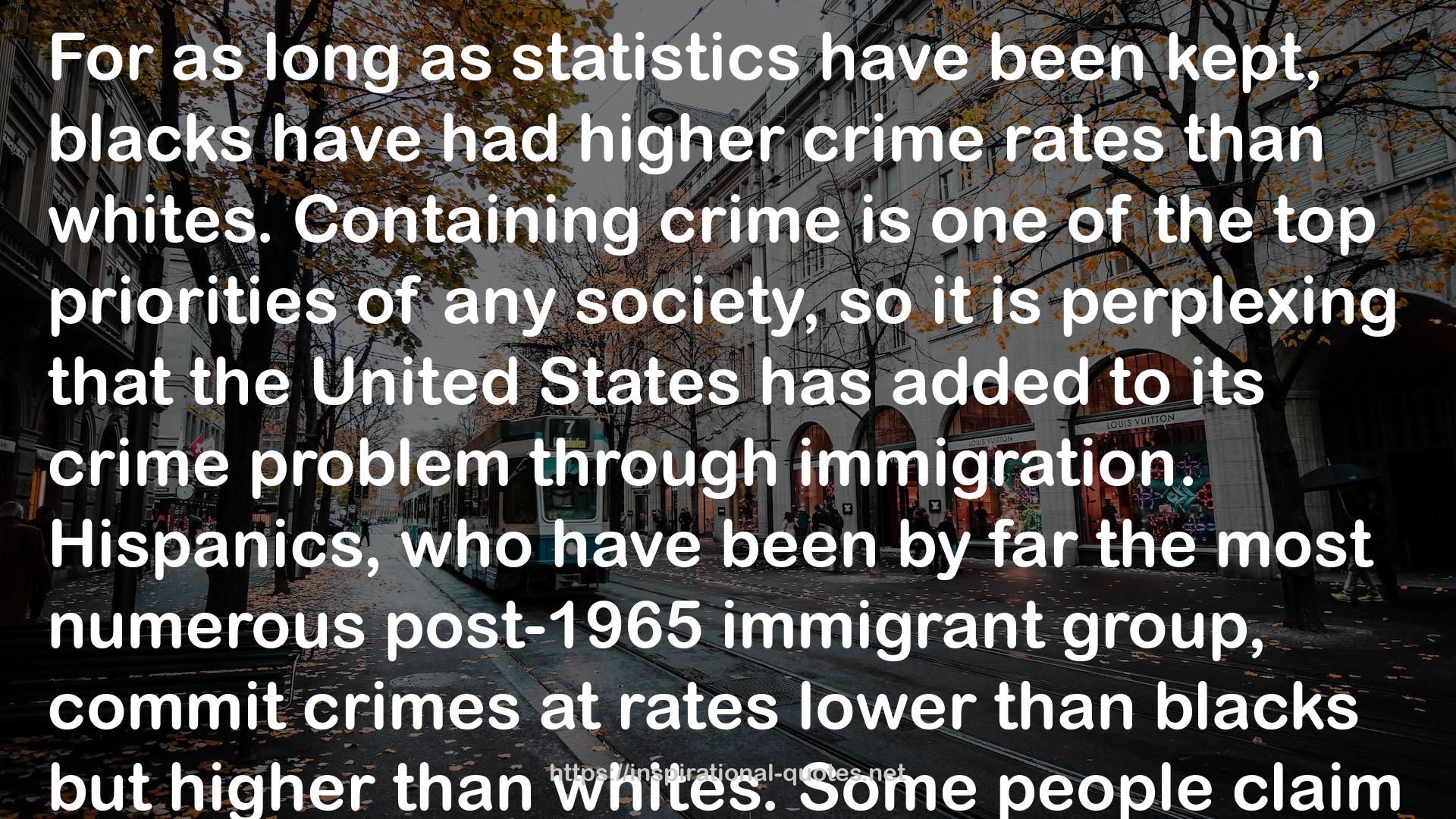" For as long as statistics have been kept, blacks have had higher crime rates than whites. Containing crime is one of the top priorities of any society, so it is perplexing that the United States has added to its crime problem through immigration. Hispanics, who have been by far the most numerous post-1965 immigrant group, commit crimes at rates lower than blacks but higher than whites.
Some people claim that all population groups commit crimes at the same rates, and that racial differences in incarceration rates reflect police and justice system bias. This view is wrong. The US Department of Justice carefully tracks murder, which is the violent crime for which racial data on victim and perpetrator are most complete. In 2005, the department noted that blacks were six times more likely than whites to be victims of murder and seven times more likely to commit murder.
There are similar differences for other crimes. The United States regularly conducts a huge, 100,000-person crime study known as the National Crime Victimization Survey (NCVS), in which Americans are asked to describe the crimes of which they have been victim during the year, and to indicate race of perpetrator. NCVS figures are therefore a reliable indication of the racial distribution of violent criminals. The National Incident-Based Reporting System (NIBRS) is another huge database that records the races of all suspects reported to the police as well as those arrested by police. Both these data sets prove that blacks commit a vastly disproportionate amount of violent crime. In fact, blacks are arrested less frequently than would be expected from reports by crime victims of the race of perpetrator. Racial differences in arrest rates reflect racial differences in crime rates, not police bias.
Justice Department figures show that blacks commit crimes and are incarcerated at roughly 7.2 times the white rate, and Hispanics at 2.9 times the white rate. (Asians are the least crime-prone group in America, and are incarcerated at only 22 percent of the white rate.) Robbery or “mugging” shows the greatest disparities, with blacks offending at 15 times and Hispanics at just over four times the white rate.
There are practically no crimes blacks and Hispanics do not commit at higher rates than whites, whether it is larceny, car theft, drug offenses, burglary, rape, or alcohol offenses. Even for white collar crimes—fraud, racketeering, bribery/conflict of interest, embezzlement—blacks are incarcerated at three to five times the white rate, and Hispanics at about twice the white rate.
Racial differences in crime rates are such an embarrassment they can interfere with law enforcement. In 2010 the Greater Cleveland Regional Transit Authority had a problem with scores of young people openly beating fares—which cuts into revenue and demoralizes other riders. It considered a crackdown, but decided against it. The scoff-laws were overwhelmingly black, and the transit authority did not have the stomach to take any action that would fall heavily on minorities. "
― Jared Taylor , White Identity: Racial Consciousness in the 21st Century
